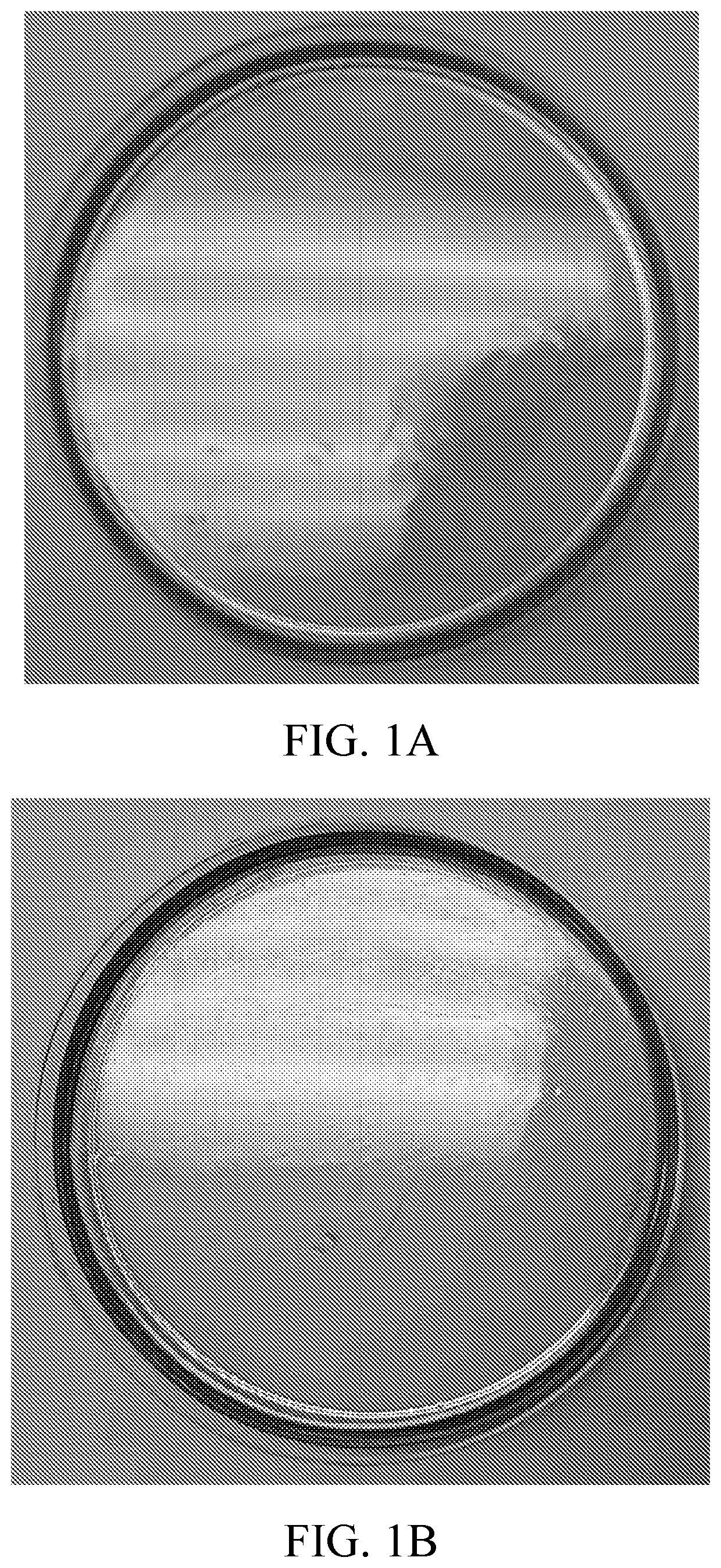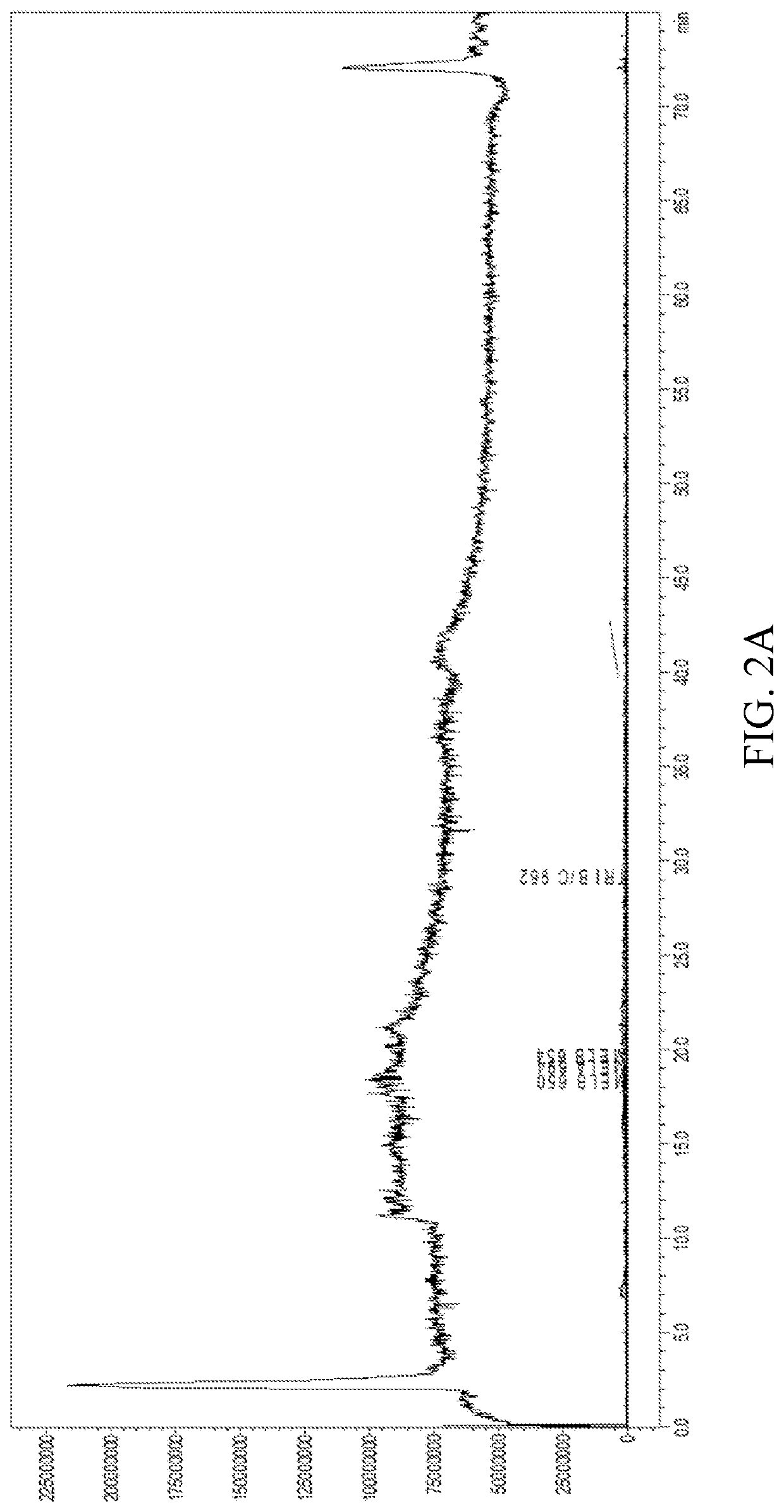Novel Methods for Production of Mannosylerythritol Lipids
a technology of mannosylerythritol and lipids, which is applied in the field of new methods for the production of mannosylerythritol lipids, can solve the problems of unsatisfactory methods, need to be extracted using potentially harmful solvents, and formation of aggregated micellar structures in solution, so as to improve the recovery and improve the effect of mel produ
- Summary
- Abstract
- Description
- Claims
- Application Information
AI Technical Summary
Benefits of technology
Problems solved by technology
Method used
Image
Examples
example 1
n of MEL Using M. guilliermondii
[0138]M. guilliermondii was cultivated using submerged cultivation in a culture medium comprising:
[0139]2 g / L Glucose
[0140]1 g / L Yeast Extract
[0141]1 g / L NH4NO3
[0142]2.5 g / L K2HPO4
[0143]0.15 g / L NaH2PO4
[0144]0.5 g / L MgSO4*7H2O
[0145]0.1 g / L CaCl2*H2O
[0146]0.02 g / L MgSO4*H2O
[0147]100 ml / L Soybean oil
[0148]Initially, pH was set to 6.0 and temperature was set to 26° C. After 2 days, when biomass accumulation had occurred, the temperature was lowered to 24° C. Erythritol (40 g / L) was added to the culture. pH was allowed to decrease to about 3.5 to 4.0 during cultivation.
[0149]MEL were produced within 3 to 7 days after the start of biomass accumulation, with a maximum concentration obtained at day 7. The MEL concentrated in a foamy layer at the top of the culture.
[0150]MEL concentrations produced were compared to MEL production by P. aphidis after 14 days. Rough analysis of MEL produced by M. guilliermondii at day 3, 6 and 7 showed that the amount of MEL p...
example 2
istics of Purified Mel from M. guilliermondii
[0151]The MEL produced according to Example 1 above were tested for surface tension reduction capability. FIGS. 1A-1B show the results of oil displacement testing in petri dishes before (1A) and after (1B) treatment. Testing of different concentrations of the MEL after purification provided the following surface tension measurements:
[0152]100% purified MEL: 32 mN;
[0153]10% purified MEL: 32 mN;
[0154]1% purified MEL: 33 mN;
[0155]0.1% purified MEL: 35 mN;
[0156]0.01% purified MEL: 37 mN;
[0157]0.001% purified MEL: 46 mN.
example 3
nalysis of M. guilliermondii Culture
[0158]Analysis of M. guilliermondii cultures was performed on Shimadzu Nexera X2 UHPLC fitted with a Thermo Scientific™ Acclaim™ Surfactant Column coupled with a Shimadzu LCMS 8040.
[0159]In the post run analysis, an ion trace was performed, looking for 93 different isomers of MEL. Referring to FIGS. 2-4, chromatograms indicated the identity and distribution of MEL isomers at day 3 (2A-2B), day 6 (3A-3B), and day 7 (4A-4B) of total cultivation.
[0160]The MEL peaks appear very small on the chromatogram, as the samples comprised a whole culture prior to extraction and / or concentration. The greatest concentration of MEL was observed after 7 days of cultivation.
[0161]Tables 1-3 below indicate numerical values for chromatogram results. The Area % value indicates the ratio of the MEL isomer group in comparison to the area of all MEL peaks.
TABLE 1Chromatogram results for whole culture after 3 days of cultivationTypeAreaArea %MEL A4,451,12212%MEL B5,546,805...
PUM
| Property | Measurement | Unit |
|---|---|---|
| temperature | aaaaa | aaaaa |
| concentration | aaaaa | aaaaa |
| temperature | aaaaa | aaaaa |
Abstract
Description
Claims
Application Information
 Login to View More
Login to View More - R&D
- Intellectual Property
- Life Sciences
- Materials
- Tech Scout
- Unparalleled Data Quality
- Higher Quality Content
- 60% Fewer Hallucinations
Browse by: Latest US Patents, China's latest patents, Technical Efficacy Thesaurus, Application Domain, Technology Topic, Popular Technical Reports.
© 2025 PatSnap. All rights reserved.Legal|Privacy policy|Modern Slavery Act Transparency Statement|Sitemap|About US| Contact US: help@patsnap.com



